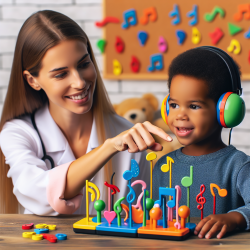The study aimed to analyze the influence of ear, gender, and age variables on MMN in children with typical development, and to compare the different measures of this potential using verbal and nonverbal stimuli. The results are promising for practitioners focused on data-driven decision-making.
Key Findings
- MMN was identifiable in all children of the sample, indicating robust auditory processing capabilities in children with typical development.
- No significant differences were found between the right and left ears, suggesting simultaneous development of auditory skills in both ears.
- Gender did not influence MMN recordings, indicating that the maturation of the auditory system occurs synchronously between males and females.
- No significant differences were observed in relation to the chronological age of the children, though a trend towards decreased latency with increased age was noted, suggesting ongoing maturation of the central auditory nervous system (CANS).
- Verbal stimuli elicited higher latency, duration, and area values compared to nonverbal stimuli, reflecting the greater complexity of processing linguistic information.
Practical Implications
For practitioners, these findings offer several actionable insights:
- Standardized Reference Values: The study provides reference values for MMN with verbal and nonverbal stimuli, which can be used as benchmarks in clinical assessments.
- Gender and Ear Considerations: Since no significant differences were found between genders or ears, practitioners can confidently apply these reference values across different demographics.
- Age-Related Trends: The trend towards decreased latency with age underscores the importance of considering the maturation process in auditory assessments.
- Complexity of Verbal Stimuli: The higher values for verbal stimuli highlight the need for targeted interventions that address the complexities of linguistic processing in children.
Encouraging Further Research
While this study provides valuable insights, it also opens avenues for further research. Future studies could explore the application of MMN in children with various auditory and language disorders, potentially leading to more tailored and effective therapeutic strategies.
To read the original research paper, please follow this link: Verbal and Nonverbal Mismatch Negativity in Children with Typical Development: Variables Analysis.










